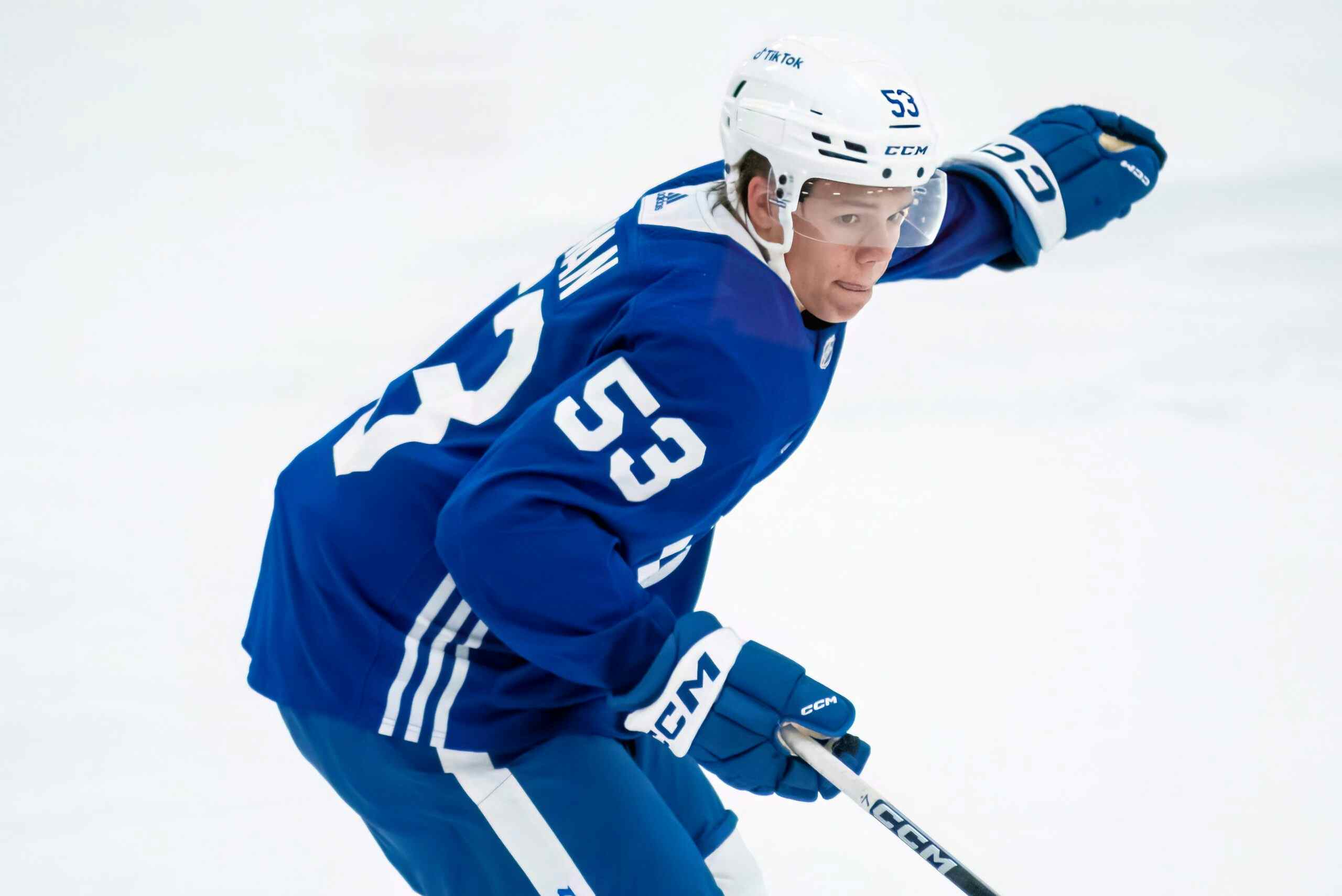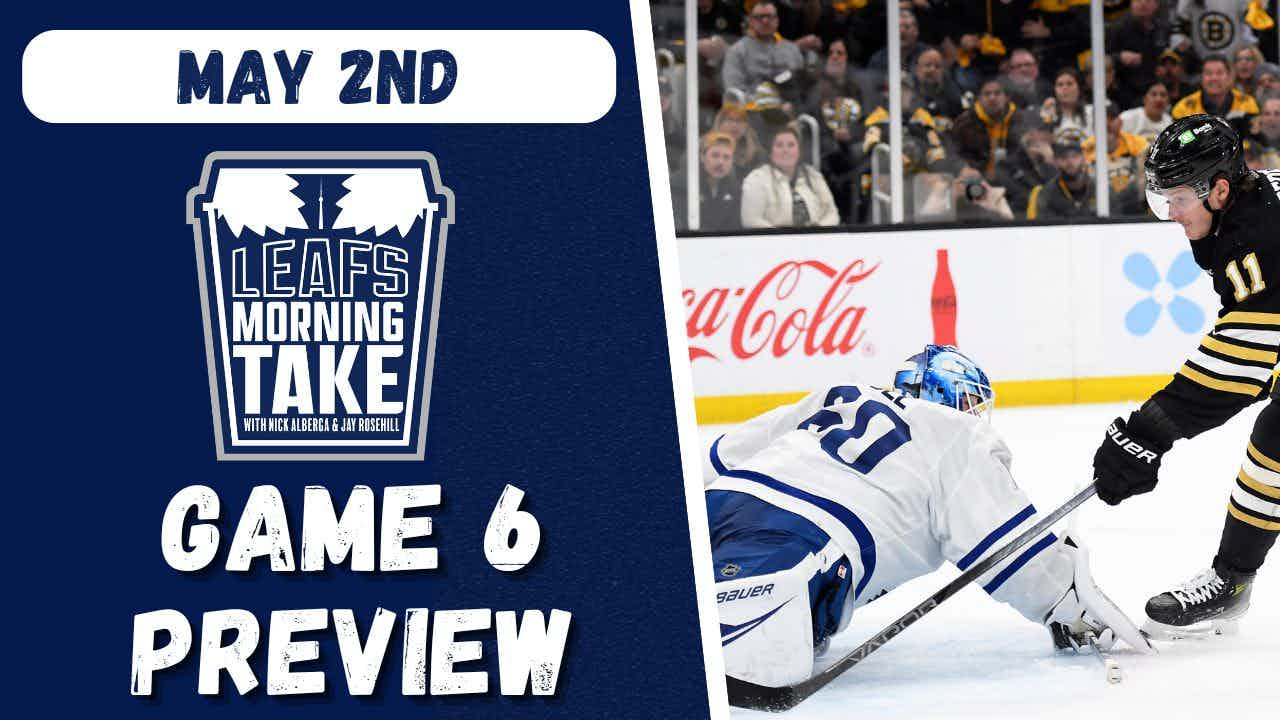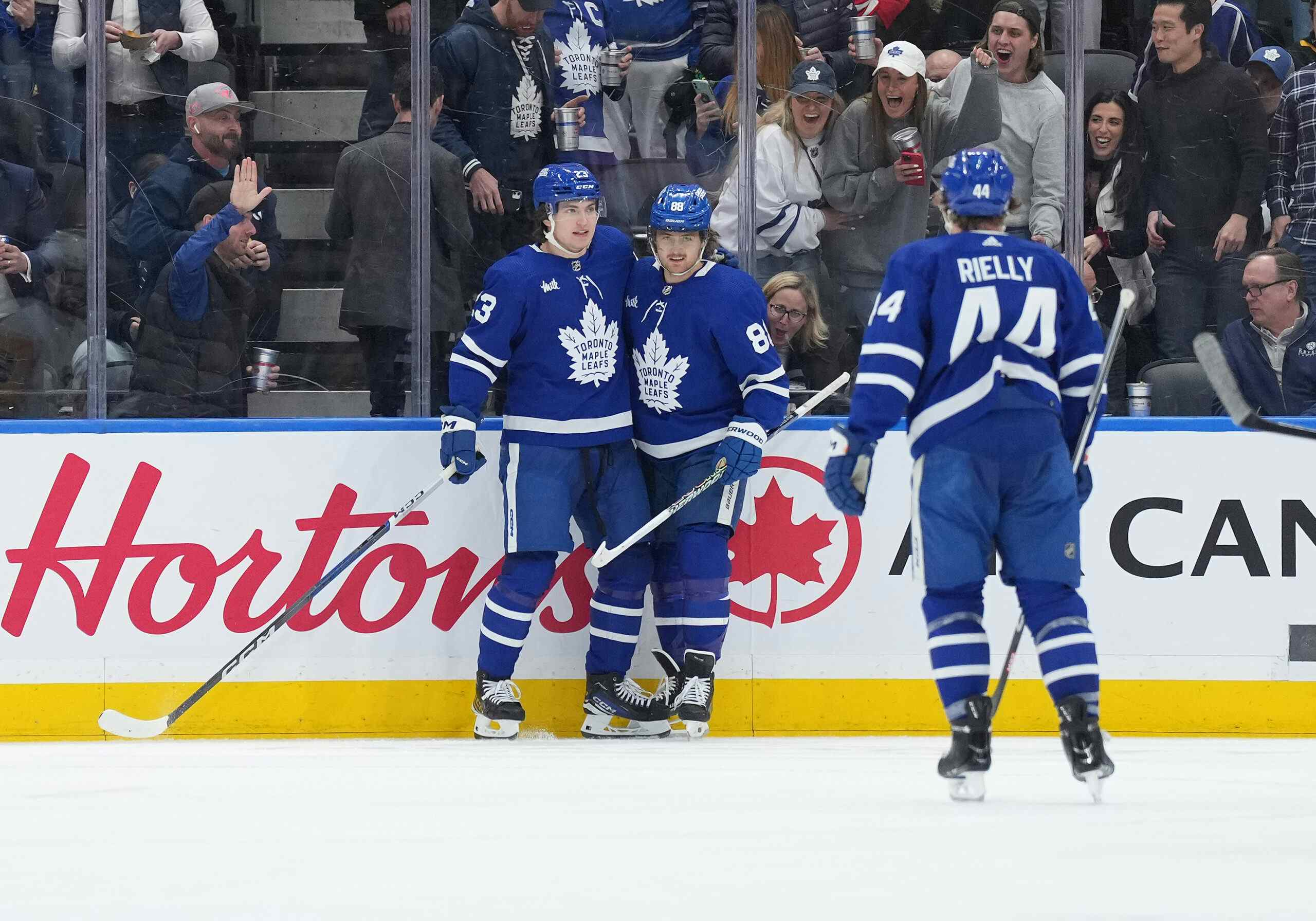Assessing Morgan Rielly’s Subway Series performance
By Cam Charron
11 years ago
I got to catch Morgan Rielly play a couple of games last week, Wednesday and Thursday games as part of Team WHL against Team Russia in the Subway Super Series. I talked to him briefly after the Thursday contest, but, like many hockey players, he’s not particularly talkative and conversations don’t fall into debates about hockey theory like they sometimes do with coaches at that level.
So the best way to analyze Rielly is to count up what he did. This was my first chance to see him live, and I was going to concentrate on him and track his performance. I’m not a particularly trained scout, and the best thing I could do was track team puck-possession metrics when Rielly was on the ice, i.e.: tally up all the goals, saved shots, blocked shots and missed shots, as well as scoring chances.
These numbers are only at five-on-five, and represent every shot attempt that took place by either team with Rielly was on the ice:
| For | Against | Rate | |
|---|---|---|---|
| Goals | 1 | 2 | |
| Shots | 13 | 16 | |
| Misses | 9 | 7 | |
| Blocks | 1 | 7 | |
| Total | 24 | 32 | 0.429 |
A lot of people liked Rielly’s performance in these games, but his possession stats weren’t particularly favourable. That said, the WHL didn’t have many forwards bring their “A” games against the Russians, so everybody was playing at a negative possession rate.
If we estimate that each team got a shot on net per powerplay attempt (Western scorekeepers don’t chart the difference, which angers me to no end), that means we can estimate Canada was outshot about 57-50 at five-on-five. Rielly didn’t make a huge impact on his teams’ possession rate, but he wasn’t necessarily a world beater out there.
He passed the eye test, making good decisions in the first game to move the puck out of the defensive zone and into the offensive zone and took a lot of risks when pressured. In my notes I only have one shot attempt coming off of a Rielly turnover, and it happened to be a blocked shot. That said, a lot of shots against came off continuous plays where Rielly and his teammates failed to grab control of rebounds. Recovery was the issue there.
Speaking of the eye-test, here’s a highlight film from Anton Tibaldi. The best play Rielly made is at 2:27, but if you missed the games, better watch the whole thing.
He was real dangerous on the powerplay. He was excellent at playing both the top of the umbrella passing as well as taking shots from the mid circle, usually on the left side. While a lot of defencemen use a slap shot, Rielly seemed better off with a good hard wrist shot from just off the wall. I have him marked down for taking three shots that were scoring chances and setting up another on the powerplay. That’s pretty good over two-game period, particularly with how good the Russians looked.
If “shot attempts” isn’t your thing and you’d prefer to look at the quality of the shots, I also marked down which shot attempts led to scoring chances:
| For | Against | Rate | |
|---|---|---|---|
| Goals | 1 | 1 | |
| Shots | 3 | 7 | |
| Misses | 5 | 2 | |
| Total | 9 | 10 | 0.474 |
Blocks aren’t usually recorded as chances (this link has a primer on scoring chances) except in circumstances where a defenceman is actively playing like a goalie in an open-net situation. Rielly looks better by this metric, but still came off slightly below even.
It’s also worth noting that in the two games at five-on-five, Rielly started 14 shifts in the defensive zone and just five in the offensive zone. As a puck-mover, he was better off going through the neutral zone with speed, and at this level it’s a good utilization of his skill-set. However, two scoring chances I have marked down came directly off face-off plays, so the discrepancy in zone starts could have been the difference between and positive outing and a negative outing for Rielly.
However, don’t read too much into these numbers. This is just a record of my chance seeing Rielly play in these two games. Brian Burke has said that he didn’t want to draft the Sedins based on the way they played in the World Juniors in their draft season. His opinion was changed when he saw the two compete against men, and trading to get the pair is a move he treats as the best move he made as a General Manager. There are plenty of possible reasons beyond ability why Rielly didn’t score a goal, or why the WHL didn’t spent the majority of the time in the offensive zone with him on the ice.
Just as a thought experiment, I wanted to see what Kristopher Letang’s development was like. That’s Rielly’s favourite defenceman and the one he would like to model his game after. After a couple of World Junior appearances for Team Canada (I’d like to see that out of Rielly), Letang made the NHL as a 20-year old:
| TOI | Corsi On/60 | Ozone Start% | Rel QoC | |
|---|---|---|---|---|
| 2008 | 14.19 | -8.66 | 51.1 | -0.256 |
| 2009 | 15.31 | 1.27 | 52.7 | 0.507 |
| 2010 | 16.28 | 12.97 | 55.4 | 0.573 |
| 2011 | 16.39 | 12.01 | 53.7 | 0.765 |
| 2012 | 17.91 | 11.04 | 52.2 | 0.583 |
Letang spent two years as an average possession player before becoming quite dominant in his 22-year old season. While I don’t want to throw out “LETANG” as a comparable, what I’d like to say is that players with the raw ability of Rielly can become better two-way players as they learn the pace of the game and settle down in their own end.
Recent articles from Cam Charron





